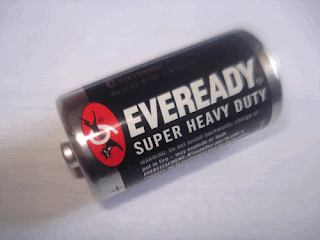During the bad weather condition particularly storms, thunder and lighting are most likely experienced. The thunder is the loud roaring sound generated from the impact of the clouds above.
The lightning is the brilliant flash of light that always comes first before the thunder.
Take note that lightning are highly dangerous because it is a giant spark of electricity. It can burn down anything that it hits on the ground such as setting trees or houses on fire.
Take note that lightning are highly dangerous because it is a giant spark of electricity. It can burn down anything that it hits on the ground such as setting trees or houses on fire.
Thus, it is best advised to take shelter during a bad weather storm.
To explain more about the occurrence of lightning, it happens when the positive and negative charges moves towards each other.
To explain more about the occurrence of lightning, it happens when the positive and negative charges moves towards each other.
Out from the action of the positive and negative charges is an electric current which is responsible for the giant spark to occur.

Assuming that a storm is about to hit your town, inside the clouds are ice particles and raindrops containing equal numbers of positive and negative charges.
When the storm begins, an action takes place inside the clouds where the rain and ice particles bang into each other. The bumping action causes the charges to be forced apart.

As the storm occurs, the positive charges of the clouds rise to the top while the negative charges go down at the bottom.
Lightning are then generated when the cloud’s negative charges meet any of the positive charges out from the ground.
Some common questions:
Why can’t we use lightning as a source of electricity?
According to the scientists, it is possible to make use of lightning as another source of electricity. This can be done by capturing lightning then storing it on a huge power container. But currently, we do not have yet such technology that exists today since the problem comes from the trouble of capturing the lightning. This is because lightning occurs randomly and it cannot be predicted.
Why lightning comes first before the thunder?
The simple answer is that light travels faster than the sound.
What is the reason why lightning burns down anything it hits on the ground?
Lightning is a natural form of electricity. Just like the typical batteries from your devices, they produce heat especially after a long period of usage. The higher the voltage used, a greater amount of heat temperature will be produced.
In case that you do not know, household equipments or appliances only have a voltage rating ranging from 110 to 220 Volts. Lightning randomly have millions of volts which is more than enough to setup a fire.

Assuming that a storm is about to hit your town, inside the clouds are ice particles and raindrops containing equal numbers of positive and negative charges.
When the storm begins, an action takes place inside the clouds where the rain and ice particles bang into each other. The bumping action causes the charges to be forced apart.

As the storm occurs, the positive charges of the clouds rise to the top while the negative charges go down at the bottom.
Lightning are then generated when the cloud’s negative charges meet any of the positive charges out from the ground.
Some common questions:
Why can’t we use lightning as a source of electricity?
According to the scientists, it is possible to make use of lightning as another source of electricity. This can be done by capturing lightning then storing it on a huge power container. But currently, we do not have yet such technology that exists today since the problem comes from the trouble of capturing the lightning. This is because lightning occurs randomly and it cannot be predicted.
Why lightning comes first before the thunder?
The simple answer is that light travels faster than the sound.
What is the reason why lightning burns down anything it hits on the ground?
Lightning is a natural form of electricity. Just like the typical batteries from your devices, they produce heat especially after a long period of usage. The higher the voltage used, a greater amount of heat temperature will be produced.
In case that you do not know, household equipments or appliances only have a voltage rating ranging from 110 to 220 Volts. Lightning randomly have millions of volts which is more than enough to setup a fire.







































